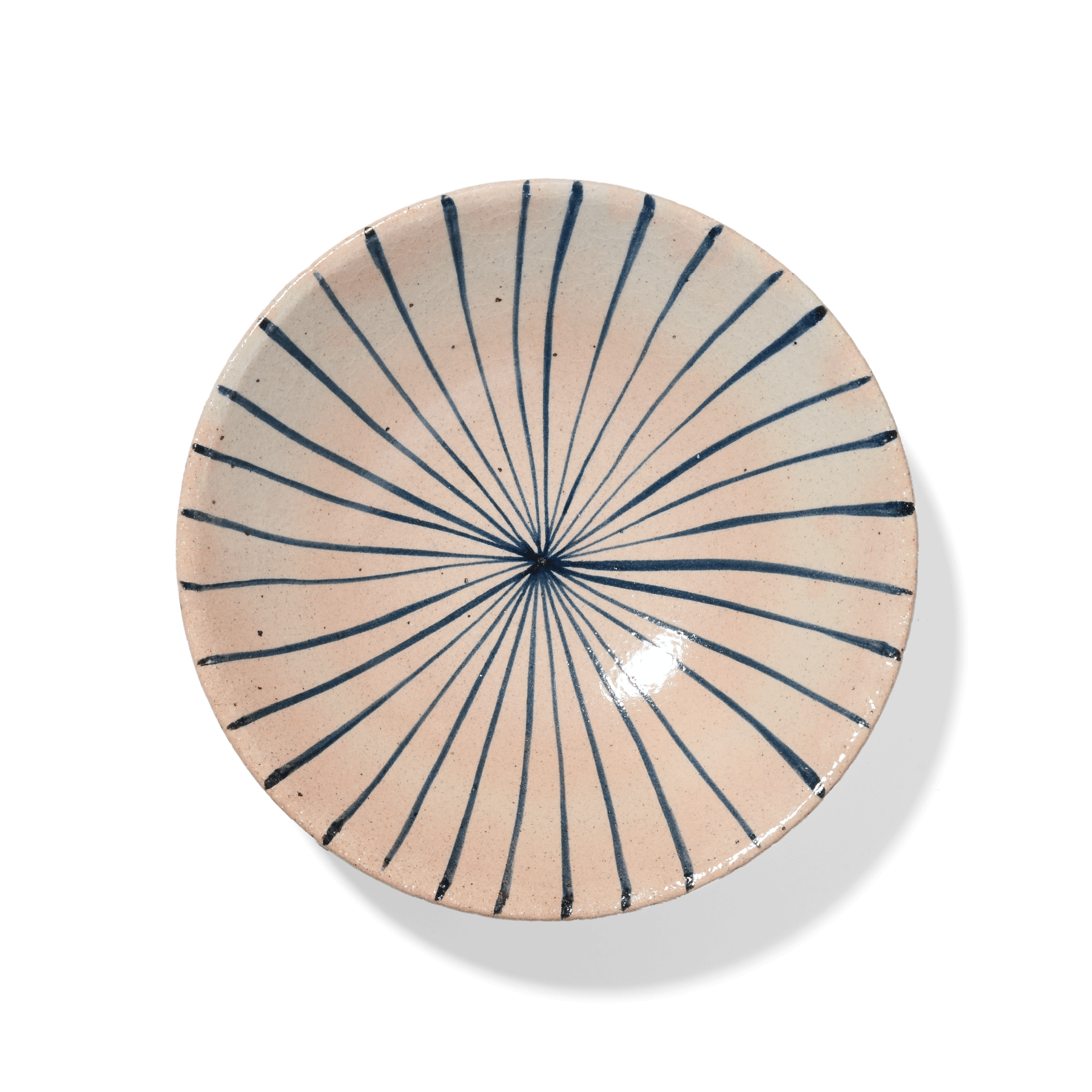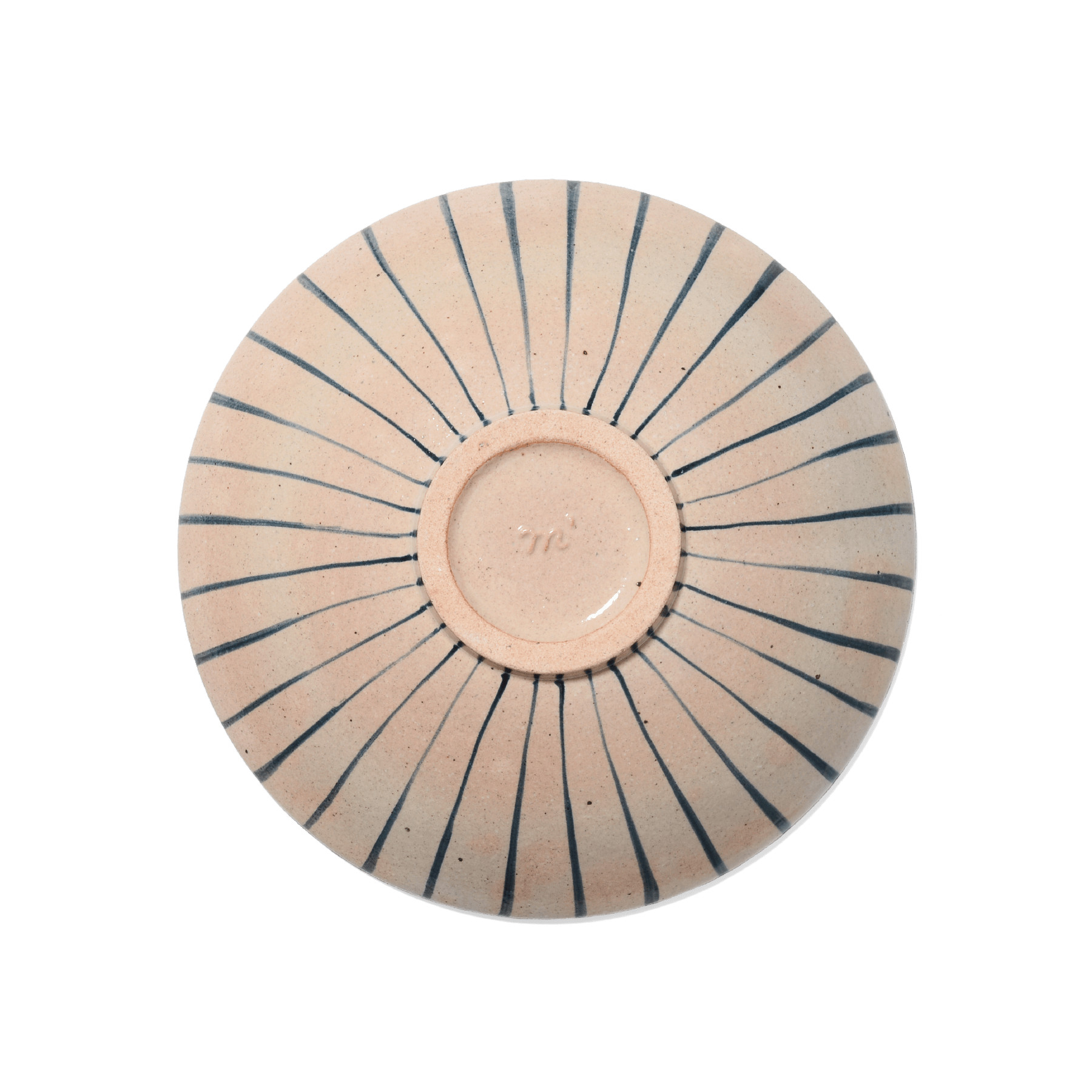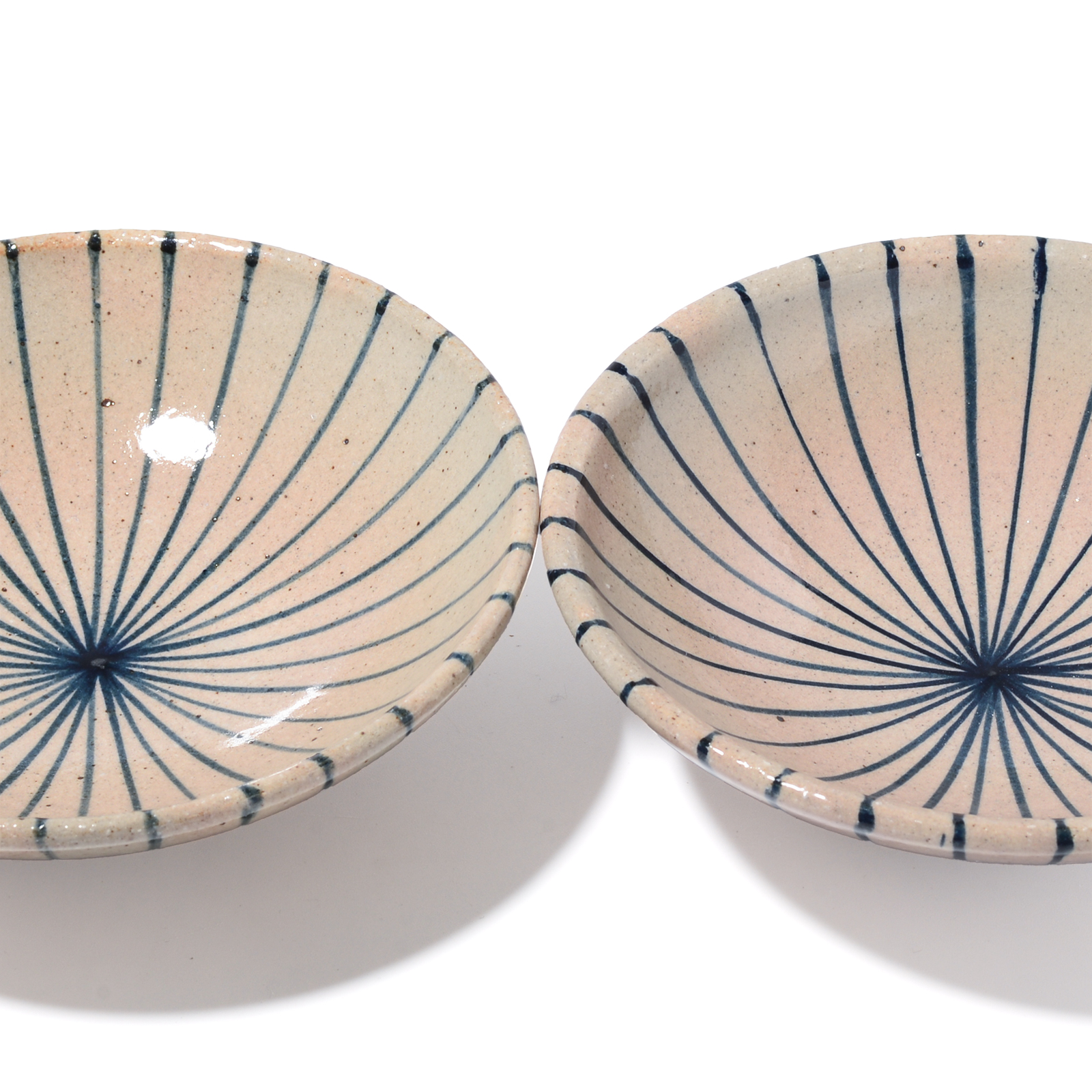Tokusa asabachi 6sun blue
Description
"Tokusa" (Japanese traditional narrow stripe) is individually hand painted with traditional Japanese blue or brown paints by our artisan. As you can see, there is a pattern inside too. This pottery tableware item with "atmospheric" light pink marks is a shallow-shaped bowl ("Asabachi" in Japanese), which enables creating beautiful margins and focusing on the arranged food. In addition, the "Tokusa" stripe that exquisitely stretches from the mouth to the center will make a bigger difference in terms of the focal & ground visual effect. Indeed, you can present Japanese-style food much more attractively and serve western-style food with a Japanese twist. Available in Blue and Brown. [18 round bowl] is recommended for presenting simmered food or tossed salad.
Features
Strong Color Shade Variations
Each piece has strong individual color shade variations. Affected by glazes and natural firing conditions such as changes in temperature, humidity and other climate elements and also how to receive the fire in the kiln chamber, each piece has own expression. It is really difficult to make the completed ware exactly same in color by firing and glazing even when the same materials are used. 100 pieces show 100 kinds of expressions, as it were.
Strong Color Irregularities
There are strong color irregularities of applying a glaze or slip, which are different from part to part in a piece of ware. For example, some parts are glazed thinly or thickly depending on the shape of the ware. That leads to part-to-part differences in appearance of the clay in a piece of ware.
Glaze or Slip Drips
The glaze or slip may look like dripping. There is unevenness of a glaze or slip when they are applied to ware by hand. There also appear glaze drips or slip drips, which are caused by the glaze or slip flows during firing.
Pinholes
Pinholes may be seen clearly on the surface. Pottery (earthenware) is mainly made from earth, and green ware contains a lot of air while biscuit firing. While glazed firing, this air inside the biscuit ware becomes air bubbles, which remain and look like small holes on the surface of the glazed part. Those small holes are called pinholes.
Crazing (Chaps)
Crazing (having chaps) may appear clearly on the glazed part. The “direct” crazing means having chaps originally. The “aging” crazing means having chaps over time as you use the tableware item. There is a difference between the shrinkage rate of the glaze and that of the clay, so crazing occurs. Note that those cracks do not come from the damage of tableware items. They might appear just before use, but it is no problem in terms of use. They appear on the surface of pottery (earthenware) and semi-porcelain.
Iron in Powder
Iron in powder may be seen clearly on the surface. Pottery (earthenware) is made from earth, which contains iron. After firing green ware, iron appears on the surface in the form of black dots. Red or black earthen clay contains much more iron, and as a result, not a little iron in powder may appear on the surface of tableware items made from this type of clay.
Light Pink Marks
Light pink marks may appear on the surface of tableware items. They appear when a component of the base clay becomes oxidized and then develops a color while fired. Interestingly, each tableware item has the “one of a kind” pattern of light pink marks because they appear depending on a variety of mixed conditions such as components of the base clay, glazes and firing settings, etc. You can enjoy the unique distinctiveness that adds to your own tableware item.
Microwave Safe
A microwave oven heats or cooks food very quickly using short electromagnetic waves, namely, microwaves. In most cases, the microwaves heat the water content of the food. However, in some cases, the microwaves concentrate on the carbonized (burnt) parts of the food, causing the temperature to rise higher than the other parts. For example, the microwaves concentrated on the carbonized (burnt) parts of stir-fried vegetables can create a large temperature difference in /on the tableware item, which may cause breakage. In addition to water content, oil content is also heated. The oil has a higher boiling point than the water, so it heats up at a higher temperature, creating a very large temperature difference between the parts that contain oil and the parts that do not, which can cause breakage.
・Never soak hot tableware in water or place it on the cold kitchen counter. Avoid rapidly heating frozen foods or putting [the cold tableware just taken out of the refrigerator] in the microwave. A rapid change in temperature will lead to “crazing” (chaps) or breakage.
※The products with gold or silver paintings, or applied with particular glazes are not microwave safe. We put a “Do Not Microwave” sticker on those items, so please confirm it.
※Accessories etc., made of other materials are excluded from microwave safe items.
Not Oven Safe
Not Dishwasher Safe
made in JAPAN
※絵柄は手描きのため、一つひとつの太さや間隔、濃淡が異なる場合があります。










